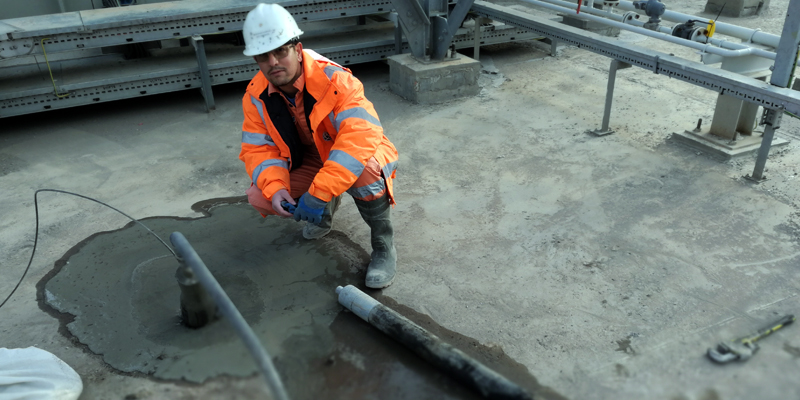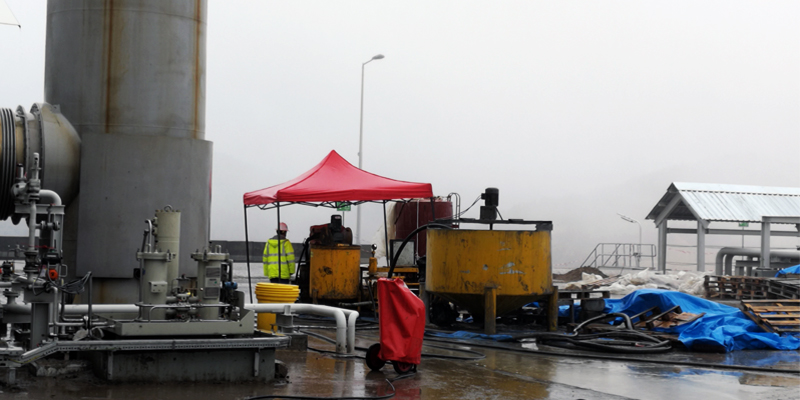

Foundation treatment using grouting in civil engineering refers to controlled injections of pump able materials into soil or rock formations under pressure to strengthen the physical characteristics of a natural formation. It is one of the best industry solutions in which ground water can be controlled during construction work. Grouting is considered suitable where soil permeability creates a heavy demand on pumping or where ground conditions are severe.
Different materials may be used to prepare an optimum design of mix depending upon the soil type, the size of rock fissures and field condition. However, the basic process is the same: the soil or rock is injected with fluids which set and reduce or act as a sealant on the material’s permeability.
Grouting is relatively costly and so wastage must be controlled. This can be achieved by adding various additives which assist with the gelling properties of the grout and limit their spread through the ground. Care must also be exercised in relation to existing services or underground structures such as sewers, since the pressure of grouting may result in fine cracks can present being penetrated.


Cement (or cementitious grout) is used for grouting materials with a high permeability. Neat cement and water or a mixture of sand (4 parts) to cement (1 part) is the usual composition. Holes are bored in a radius around the area to be excavated before being injected with a thin grout, the viscosity of which is then increased by reducing the water-cement ratio. If required, secondary holes are bored between the primary holes to ensure the complete grouting of the area.
Bentonite is produced from clay which has thixotropic properties, meaning it forms a highly water-resistant gel which, when mixed with additives, can create a permanent barrier to water flow. This is used where soil particles are too small for cement grouting, most commonly to combat seepage in alluvial soils beneath the foundations of dams or other water-bound structures.
Chemical grouting is used in soils of medium to coarse grading. Materials such as sodium silicate and calcium chloride are mixed together in liquid form and solidified into a gel. There are two main processes: ‘Two-shot’ process: Pipes are driven into the ground. One chemical is injected followed by another meaning that the reaction, and soil strengthening, is rapid. ‘One-shot’ process: This involves chemical mixing prior to injection, with the hardening being delayed by the composition. This allows for wider borehole spacing. Chemical grouting has the advantages of allowing economical spacing of bore holes, greater penetration of the grout, and more flexibility in terms of the time of grouting.
As opposed to chemical grouts, resin grouts have a very low viscosity which can penetrate fine sands. The type of resin used depends on the chemical content of the local water table and may result in different times for setting.
Common types include:
Bitumen emulsion can serve as a suitable grouting material that can be injected into fine sands as an impermeable barrier to water. Soil strength will not be increased, but cut-off walls beneath dams and other water-bound structures can be formed effectively.